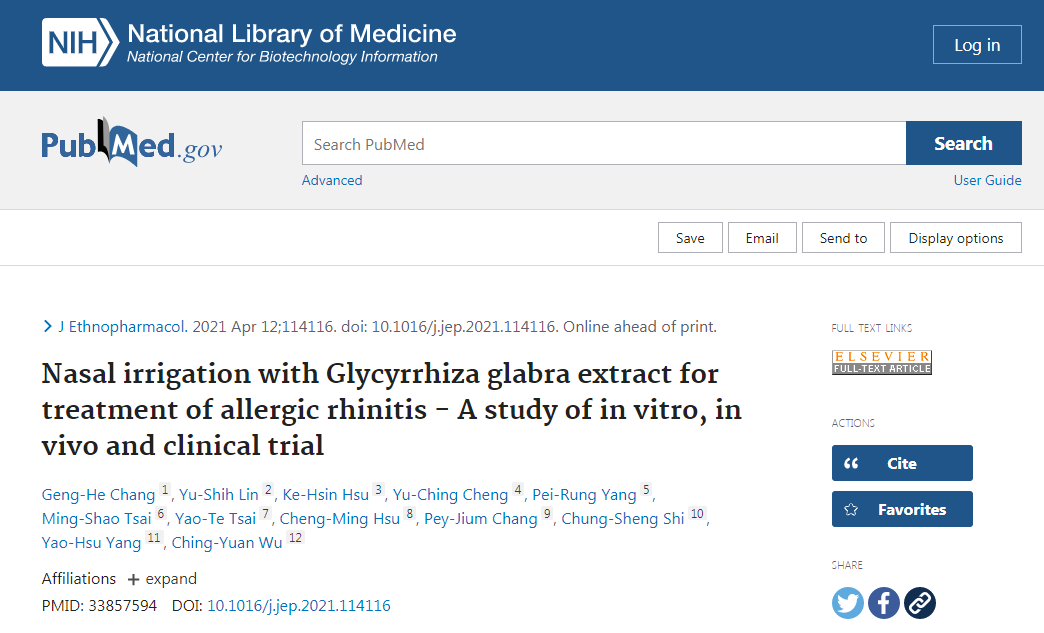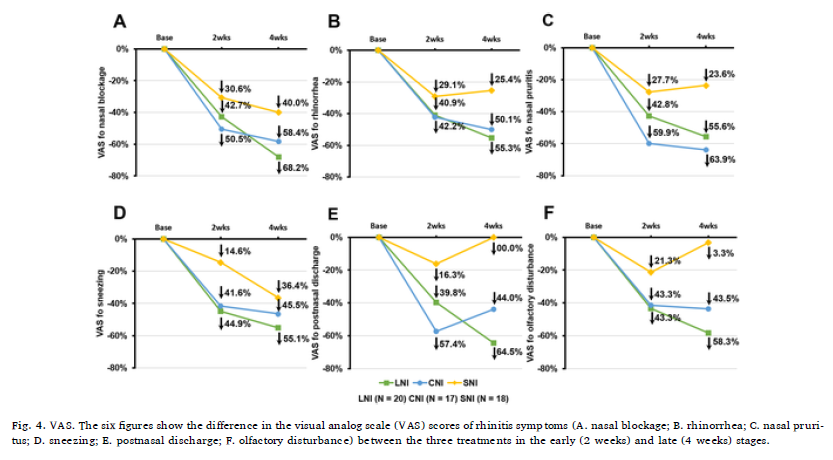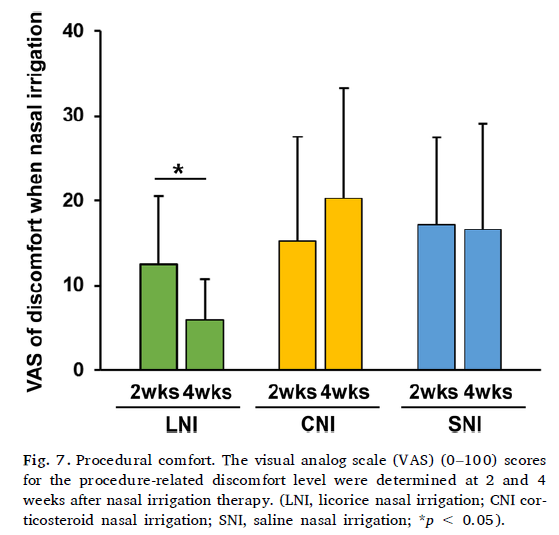草本洗鼻治療過敏性鼻炎之效益

Abstract
Ethnopharmacological relevance: Glycyrrhiza glabra, a family of licorice and a traditional Chinese medicine with sweet taste and favorable smell, has anti-inflammatory, anti-allergic and immunomodulatory functions.
Aim of the study: We developed a licorice extract (LE) by using glycyrrhiza glabra and administered it through nasal irrigation to treat allergic rhinitis (AR).
Materials and methods: LE was prepared into extract powder, and the anti-inflammatory effect of the LE was evaluated by calcium ionophore-induced activated mast cell model (in vitro). Then, local passive anaphylaxis assays were applied to investigate the anti-IgE-mediated allergic reaction of the LE in mice (in vivo). A developed LE was administered through nasal irrigation to treat AR in clinic settings. A total of 60 participants diagnosed with AR were included in this clinical trial; they were randomly assigned to three interventions: licorice nasal irrigation (LNI), corticosteroid nasal irrigation (CNI), and saline nasal irrigation (SNI). They performed nasal irrigation once a day for 1 month. Both subjective questionnaires (22-item Sino-Nasal Outcome Test [SNOT-22] and visual analog scale [VAS]) and objective examinations (acoustic rhinometry and nasal endoscopy) were used for effectiveness assessments.
Results: All three interventions could improve SNOT-22 scores, but the effects of LNI and CNI were more significant. According to VAS scores for nasal blockage, rhinorrhea, sneezing, nasal pruritus, postnasal discharge, and olfactory disturbance, the effect of LNI was superior to those of CNI and SNI. The results of rhinometry revealed that LNI significantly improved nasal resistance. Endoscopic analysis showed that both LNI and CNI, but not SNI, could significantly improve turbinate hypertrophy. Moreover, the best procedural comfort was found for LNI, which had no side effects or complications during the trial.
Conclusions: LNI is a natural, safe, and innovative therapy that can effectively treat AR. Its effect is superior to those of CNI and SNI, and it has greatly improved procedural comfort.
Keywords: Glycyrrhiza; allergic rhinitis; corticosteroid; licorice; nasal irrigation; saline.

此為文章中部份資訊:過敏性鼻炎患者,分成三組分別接受 1.草本洗鼻 (LNI/綠色);2.類固醇洗鼻 (CNI/藍色);3.鹽水洗鼻 (SNI/黃色),每天一次為期一個月的治療,並在第二週與第四週評估患者對於治療後鼻炎的相關症狀的主觀改善程度,包括:A.鼻塞 / B.流鼻水 / C.鼻子癢 / D.噴嚏 / E.鼻水倒流 / F.嗅覺異常。結果顯示:草本洗鼻相較於其他兩者,能較廣泛且持續地改善鼻炎症狀。
此為文章中部份資訊:在第二週與第四週使用鼻阻力儀,測量患者對於治療後鼻腔通暢度的客觀改善程度。結果顯示,草本洗鼻(圖A)相較於類固醇洗鼻(圖B)及鹽水洗鼻(圖C),能顯著改善鼻阻力(p<0.001)。
此為文章中部份資訊:在第二週與第四週使用內視鏡,測量鼻腔黏膜腫脹改善的程度。結果顯示,草本洗鼻(LNI)能持續顯著地改善鼻腔黏膜腫脹狀態。
此為文章中部份資訊:在第二週與第四週評估患者對於洗鼻不適感的主觀差異(0-100分,分數越高者越不舒服),結果顯示:草本洗鼻(綠色)相較於類固醇洗鼻(黃色)與鹽水洗鼻(藍色),能有較低的洗鼻不適感。
